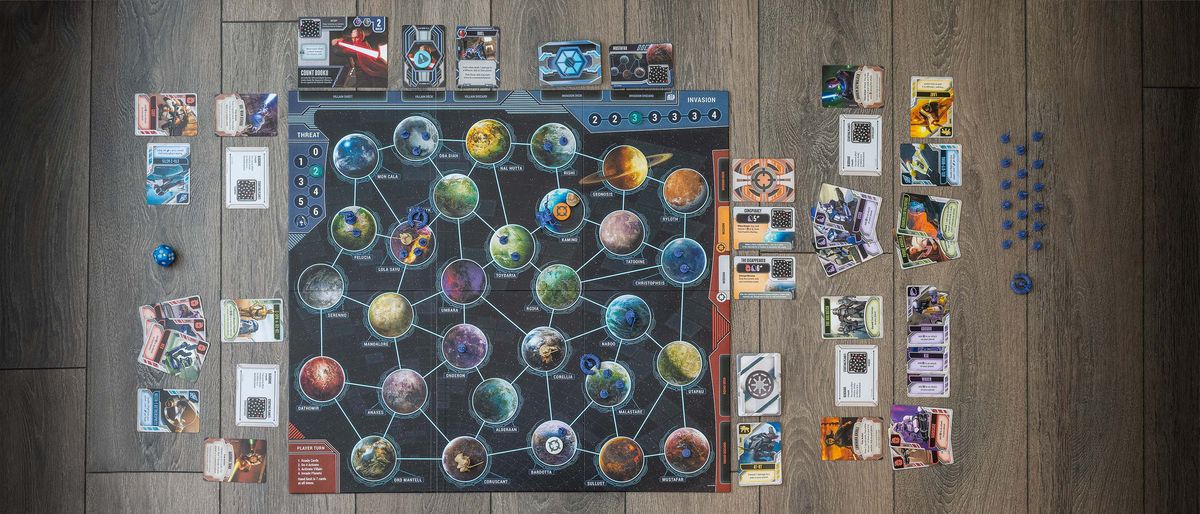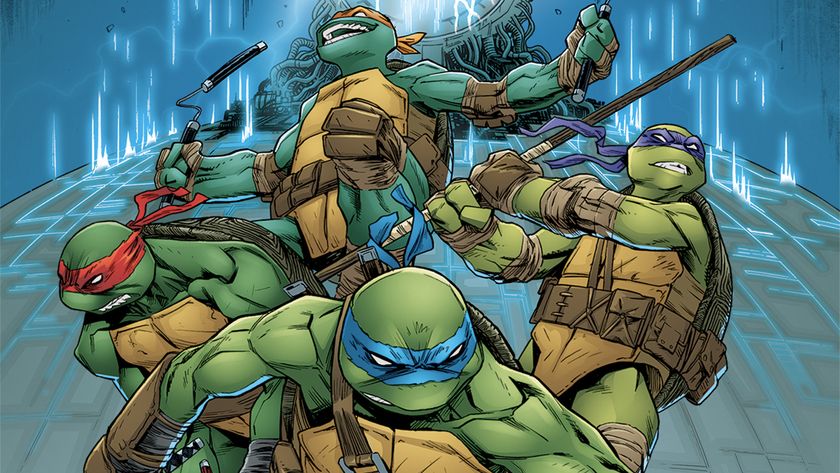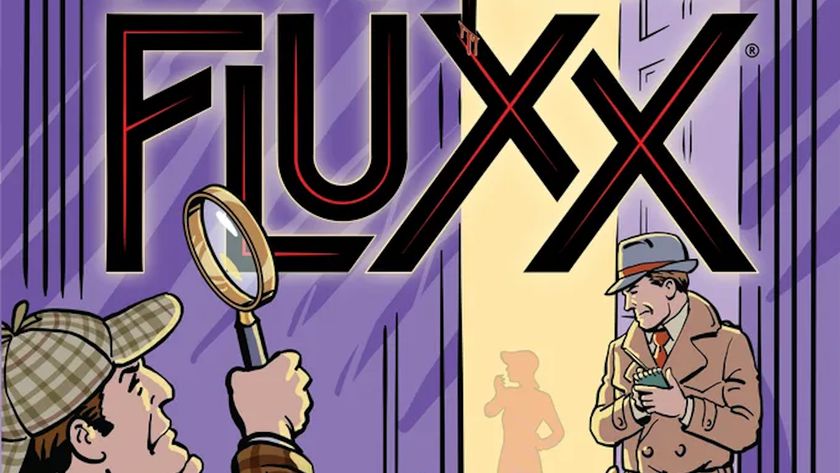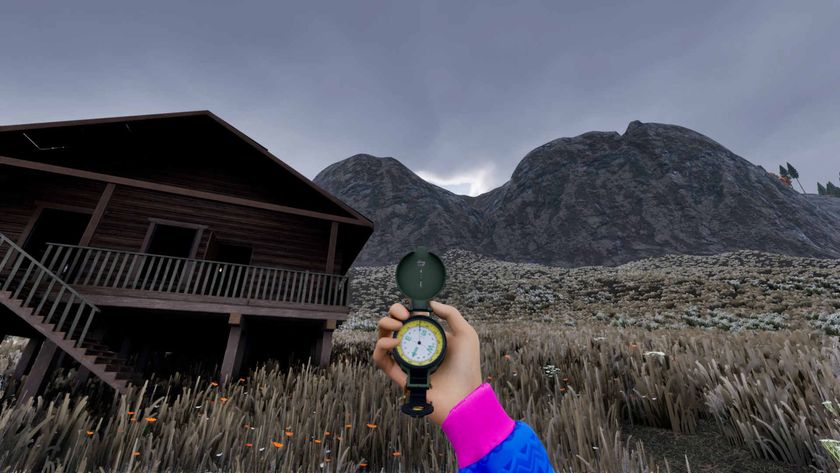12DOVE Verdict
If you’re a Star Wars or Pandemic fanatic then The Clone Wars is an easy recommendation. And if you’ve never tried Pandemic before and are keen to play solo games or add a fifth player into the mix, this lightsaber swashbuckling spin-off avoids the need to pick up the original and its necessary expansions to do so. The Clone Wars adds enough meat to the original’s base game without swamping new or inexperienced players with needless mechanics too, while the battle system is simple and fun. Finally, the villains add plenty of variety and the missions guarantee a challenge, even for Jedi Grandmasters.
Pros
- +
Extra mechanics add a deeper – but still accessible – layer of strategy
- +
Plenty of replay value
- +
Top-notch miniatures
- +
Clone squad cards are a nice touch
- +
It’s Pandemic!
Cons
- -
Nothing can beat the original Pandemic’s broad appeal
- -
It's possible to get overwhelmed and boost the Threat meter very quickly
Why you can trust 12DOVE
Star Wars: The Clone Wars Pandemic is another spin-off built around the board gaming phenomenon that's been going strong for more than a decade. The question is, does it build upon the existing source material like The Empire Strikes Back or get bogged down by a glut of unnecessary changes like the Special Editions?
Whether you’re a tabletop veteran who's played everything or a newbie looking to delve beyond Monopoly and Risk, chances are you’ve played at least one of the following titles: Catan, Ticket to Ride, and Pandemic. What sets the latter apart from its best-selling peers is that it’s one of the best cooperative board games, in addition to being a bona fide modern classic (it ranks highly on our list of the best board games overall). As such, Star Wars: The Clone Wars Pandemic takes that same brand of addictive co-op gameplay and sets it smack bang in the middle of the Star Wars universe. Diseases have been replaced by droids, cities have been replaced by planets, and role cards have been replaced by Jedi. But what makes this galactic romp fresh compared to the original game is one of four villains stomping around the board, not to mention a fun dice-based battle system.
Star Wars: The Clone Wars Pandemic - features
| Price | $59.99 / £48.33 |
| Ages | 14+ |
| Players | 1 - 5 |
| Lasts | 1hr per session |
| Complexity | Low |
| Play if you enjoy | Star Wars, Pandemic, Risk, strategy, wargaming |
Pandemic spin-offs such as Reign of Cthulhu and World of Warcraft: Wrath of the Lich King are a cut above the original in terms of presentation as we noted in our Pandemic World of Warcraft review. And Star Wars: The Clone Wars is no different. The most notable departure is pawns and disease cubes, with their Star Wars counterparts now represented as 50 moulded miniatures: seven Jedi and four villains (roughly 25mm scale), 36 droids (roughly 12mm scale), and three blockade ships. Each miniature is extremely well detailed, and even the tiny droids come in a variety of poses.
The 138 cards are suitably thick and feature both artwork and screenshots, although we would have preferred only artwork for consistency’s sake and because it generally looks better. Each villain has a two-sided information sheet, with a wealth of information including their HP, specialist setup instructions and win conditions.
You also get six plastic markers. Two used to indicate planets on which a mission is taking place, one to indicate the Jedi in play during a solo game, two threat and invasion markers, and one Reminder Marker. The threat and invasion markers are transparent, which is a nice touch, so they don’t obscure values on the board.
The board itself features 30 planets that fans of Star Wars: The Clone Wars television show will no doubt recognise, so don’t waste your time searching for Hoth, Endor or Dagobah here. The designers opted for a somewhat generic – albeit functional – representation of the galaxy. Planets are equally spaced and identical in size to maximise real estate, which is handy, since they can fill up with Separatists pretty quickly. The game also comes with a very chunky 12-sided dice for combat and a slider to track a power meter used by Darth Maul and General Grievous’ mission list.
How does Star Wars: The Clone Wars Pandemic work?
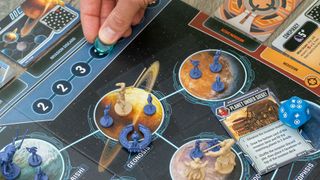
- A fantastic selection of miniatures
- Cards boast plenty of Star Wars fan service
- That same Pandemic system we know and love
As the Pandemic System logo on the box suggests, Star Wars: The Clone Wars is cut from the same cloth as Z-Man Game's incredibly popular original, but more cards, villains, and a combat system gives it a distinctly different flavour to the base game. Players each select a Jedi (solo players pick two) and work together to face off against one of four villains and their army of droids. Win conditions revolve around completing a set number of missions, before enacting and beating the ‘Finale’ (a kind of mega mission).
The difficulty level is determined by how many missions you choose to complete. 'Padawan' is the easiest difficulty and requires three missions before reaching the finale, while Jedi Grandmaster is the hardest, tasking players with completing six. The game also challenges veteran players to take on even more missions, and if you’re really struggling or simply teaching the game to new players, there’s certainly no reason why you couldn’t play less than three missions.
Turns require each player to make four actions, where they can: fly (move to a connected planet), reinforce (draw a Squad card), and attack. None are a requirement and they can be completed in any order or repeated. The villain then acts upon the card drawn from its deck before the Invasion phase begins.
The Invasion phase is the main mechanic for thwarting your fight against the Separatists. It happens at the end of every turn and is very similar to Pandemic’s Infection Rate. You determine which planet a single droid lands on by flipping over the same number of cards in the Invasion deck as per the Invasion meter. Each villain features a card labelled ‘Planet Under Siege!’, which increases the meter, adds three droids to the planet on the bottom of the Invasion deck, and requires you to shuffle the Invasion discard pile and place it on top of the Invasion deck. This then means you have a much higher chance of causing an Occupation, since you’ll be drawing planets that have already been invaded.
While you can only play against one villain's deck, Count Dooku brings Ventress and Grievous into play
An Occupation occurs when a fourth droid would be required to land on a planet. Instead of adding the droid, an Occupation is declared and a blockade ship is added. OG Pandemic players will recognize this as being very similar to an Outbreak, but unlike the original game where this would cause a disease to spread to neighbouring cities (risking further outbreaks), Occupations do not affect neighbouring planets. Blockade ships have 2HP and effectively shield other enemies on the planet, because they have to be destroyed before other enemies can take damage.
In the top-left of the board is a Threat meter. If this increases to seven, it’s game over. During the early to mid game, the meter is most likely to increase for two reasons - an Occupation happens, or as a direct result of Asajj Ventress or Darth Maul’s special abilities. The former advances the Threat meter every turn she spends on a planet with an unresolved mission, and the latter increases the meter when his power reaches five. The two late-game Threat increases happen when you’re required to add a droid or blockade and they’re all in play, or if you’re required to increase the Invasion meter, but it has already peaked.
Alongside Maul and Ventress, Count Dooku and General Grievous make up the quartet of villains. Each has a Villain Sheet that displays important information such as HP and any special abilities. The front details how a villain behaves for the bulk of the game, while the reverse explains how to set up and beat the Finale. While you can only play against one villain's deck, Count Dooku brings Ventress and Grievous into play, although they have less health and none of the special abilities listed on their own sheets.
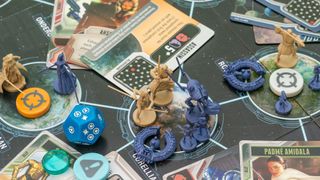
The Star Wars: The Clone Wars’ combat system is a fun addition to the Pandemic formula and manages not to complicate the much-loved gameplay. It begins with an attack phase. This is where the Squad deck comes into play. Each player has a hand of up to seven cards. Blue Transport cards provide movement boosts. Yellow Armor cards mitigate one damage per card. Green Ally cards can be used at almost any time during play, but are then discarded. And finally, there are Red Assault and Purple Stealth cards. These two add one damage per card during the attack phase, but only cards of the same colour can be used in the same instance.
So, if you had two Stealth and three Assault cards, you could only increase your attack by two or three points and not five. You then roll the dice to determine your Jedi’s attack, which is added to any card attacks you’ve accrued. Droids have 1HP, blockades have 2HP, and villains usually have more. Used cards are tapped to indicate they have been spent, but are reactivated on the next turn. This is significant if two attack phases are used in the same turn or if two Jedi are on the same planet and want to share Squad cards, since tapped cards cannot be used.
The dice also indicates any damage taken by the Jedi in play and any remaining enemies add to the damage tally. Instead of losing HP, damaged Jedi are required to remove an equivalent number of cards from their hand. Unless, they have enough Armor cards to mitigate the damage.
Star Wars: The Clone Wars Pandemic - gameplay
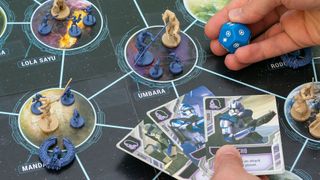
- Different villains and Jedi add lots of replay value
- Missions allow you to fine-tune the difficulty
- The combat system is fun and intuitive
There’s a reason why Pandemic has sold over five-million copies and become a portal into the wider hobby. And thankfully, The Clone Wars has inherited its intuitive core mechanics and moreish gameplay. New players will naturally look to existing players to provide the strategy, but once the group clicks and everyone begins to work together like a well-oiled machine, The Clone Wars is at its ‘Clanker’ busting best.
The beauty of a cooperative experience is that each player is constantly contributing to the overall strategy. And during combat, players on the same planet can help out their warring partners. This means that the game is rarely boring between turns and once players become accustomed to the game, it moves at a healthy pace anyway.
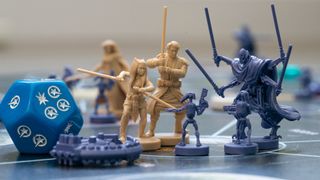
Star Wars: The Clone Wars has a higher RRP than Pandemic, but it isn't hard to see why. The miniatures are a fantastic addition and would make great projects for anyone who’s handy with a can of primer and a brush. Out of the playable Jedi, Anakin, Obi-Wan, Yoda, Ahsoka, and Mace Windu’s presence is hardly a surprise, but it’s nice to see a couple of characters that ardent fans will recognise in Luminara Unduli and Aayla Secura. And additional miniatures would be the perfect excuse for future expansions.
With so many options to customize the experience, it’s difficult to say how long the average game will last. We found that a three-player game with four missions lasted roughly 1.5hrs, while one solo game clocked in at less than 50mins, so the game's official estimate of 60mins is pretty accurate. Regardless, you can happily get two or three games in during an afternoon of play.
The instructions tell you to shuffle the Jedi deck and pick a character to play at random. But part of the Star Wars charm is that fans can lightly roleplay with one of their favourite Jedi (Ahsoka!!!!). But if you do eventually get bored, there’s so much more customization on offer here than the original Pandemic. When you consider the 24 mission cards, four villains and six Jedi, The Clone Wars offers plenty of replay value.
Perhaps the most frustrating aspect of The Clone Wars is that you can get overwhelmed pretty quickly and soon find yourself past the point of no return. This is likely a byproduct of the game’s additional mechanics. Unlike the original base game, there are so many ways to increase the Threat (formerly Outbreaks) meter and on top of that, you’re constantly trying to keep on top of the Invasion rate, rid the board of the villain, and complete missions. At times, this can turn your strategy into a bit of a frantic rush.
...once the group clicks and everyone begins to work together like a well-oiled machine, The Clone Wars is at its ‘Clanker’ busting best
The squad cards are a really neat addition that will delight diehard fans. Each one contains a different character or vehicle and the Stealth and Assault cards all feature clones, so familiar faces like Commander Gree, Fives, and Echo pop up frequently. We even found ourselves trying to keep cards that featured our favourite troopers. XCOM vibes, anyone?
Each villain behaves differently and swapping them in and out is a great way to freshen up multiple sittings. We found that Count Dooku is a great choice for games with more than two players, since he brings Ventress and Grievous into the fold. Playing against Ventress outright can be quite challenging since her special ability raises the Threat level for every turn that she’s on a planet marked with a mission, and her deck is constantly trying to move her towards the nearest mission planet.
While Grievous doesn’t have a special ability, his deck is riddled with cards that trigger invasions. And Maul’s Power Meter means that you’ll constantly need to fell him or risk upping the Threat meter prematurely. Each villain brings their own flavour to the game and it’s nice to see that each Finale provides a nod to their respective storylines (you end up fighting Grievous on Utapau, for example).
The beauty of the Pandemic system is that you can have as much fun on your own, as with playing alongside other players. But while solo rules were only introduced via the original Pandemic's 'In the Lab' expansion, The Clone Wars allows you to play solo from the outset. Solo games play out no differently, except you select two Jedi to play as and move the Solo Marker between them, to indicate which one is in play. There’s nothing stopping you from adding additional Jedi into the mix as well, so long as you’re content juggling multiple hands.
Should you buy Pandemic: Star Wars: The Clone Wars?
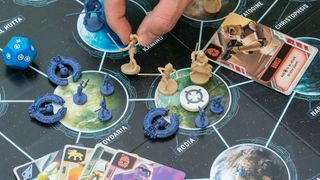
It's Pandemic in a galaxy far, far away... If you’ve played the original and are looking for a slightly more involved game, without committing to something like Eldritch Horror, then The Clone Wars fills that gap. The space opera theme won’t be to everyone’s taste, but you certainly don’t have to be a Star Wars diehard to enjoy the game. But if you’re partial to dusting Pandemic off every now and again, just don’t expect a reinvention of the hyperdrive.
The Pandemic System clearly translates very well to other IPs, and Star Wars might just be the best fit yet. Now, where’s that Original Trilogy edition?
Buy it if...
The prequel era is your jam
Do you worship Dave Filoni? Is Ahsoka your favourite Jedi? Do you consider Revenge of the Sith the underrated jewel in the Star Wars crown? Then this one should be almost as tempting as the Dark side…
Pandemic with space battles sounds like fun!
There’s no doubt about it, The Clone Wars’ easy-to-pick up combat system feels right at home within Pandemic’s tried-and-tested cooperative mechanics.
Don't buy it if...
You've moved on from Pandemic
Just because you’ve had your fill of the classics, doesn’t mean you don’t still respect them. But if your ideal game night has long since morphed into another game of Scythe, then The Clone Wars might not be for you.
You're content playing the OG
Perhaps you dust off Pandemic on a regular basis, have all the expansions, a team of willing participants and simply can’t imagine moving onto something similar but different.
How we tested Pandemic: Star Wars: The Clone Wars
We beat the game with two and three players on Padawan and Jedi Knight difficulties, and tried out the solo game too. This allowed us to play as every Jedi and fight every villain. For more information on our process, check out our guide on how we test.
For more tabletop recommendations, don't miss these essential board games for 2 players, board games for families, or must-have board games for adults.
More info
| Genre | Strategy |

When he's not putting together Lego or board game reviews for us, Mike is Deputy Editor of N-Photo: The Nikon Magazine. He also brings over 10 years of experience writing both freelance and for some of the biggest specialist publications.
Most Popular




